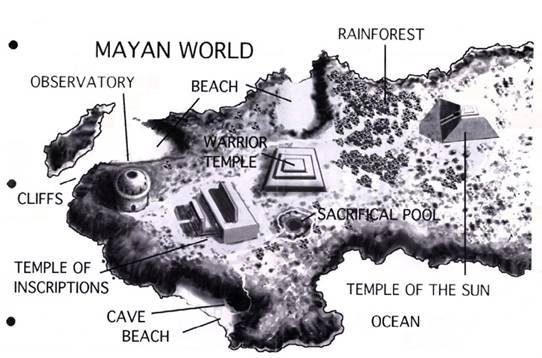Political structure

Just like the Aztec, the Mayan who are just beside the Aztec in term of geographic but not in term of time, too have develop the belief of sacrificing human to their gods. Compare to the Aztec, the Mayan are in many ways identical to them, except that the Mayan are a little more advance, such as in mathematics and technology.
Cities
The Mayans appreciated their culture and material splendor more than any other field; it can be clearly seen in their architecture and city. These city states were the center of power for king-priest.
Many Maya cities and ceremonial centers have been discovered, some of which appear in today’s map, from the now Mexican states of Campeche and Yucatán down to Honduras in Central America. Not every city in the Mayan civilization developed at the same time. During the classical period (250 – 900 AD), the Mayan people at the highlands raised their first edifices; this causes the lowlands to witness the flourishing of great cities such as Tikal.
Each Maya city exhibits a unique style, although regions and epochs lent them certain common features. When one visit the ruins of the cities that seem to suddenly appear from the dense jungle, he or she cannot but admire the engineering workmanship which guaranteed the supply of provisions and water to the inhabitants; the fine stucco decorations; the stone estelas, dumb witnesses to the most advanced calendar system of those days; the ample and complex network of roads that criss-crossed all the land, keeping communications, commerce and interchange open to all Maya centres.
The names of the old cities are forgotten. The ones we use today were made up by explorers and missionaries, travelers and archaeologists. One of the few prehispanic names we keep is that of the City of the Wizards of the Water, Chichén Itzá.
Urbanism
The Mayan archaeological zones are just like the Aztec, they build their cities based on astronomy. These towns were built along a predetermined axis, with a group of wide-stepped plazas that were linked to platforms on which temples, palaces and pyramids were built. The urban design did not always follow a plan, but often corresponded to the earth's topography, often in accordance with mathematical measurements and magical symbolism.
In the Yucatan peninsula (Mexico) these cities were built next to great natural water wells called cenotes, and were linked together by long sacbés (white roads) Religious ceremonies were held in the urban centers; ball games were played; and on specific days, a large market was installed.The Maya cities were also bureaucratic centers where political, civil and military matters were dealt with.
Sometime during the Post-Classic period (A.D. 900-1500) ramparts first appeared. The upper classes—made up mostly of nobles and priests—lived in elegant houses inside the walls that formed the ramparts. The common people lived around the acropolis, occupying rustic huts, living in nuclear families and maintaining their cornfields. In its time these fortressed cities would have appeared grand and colorful.
